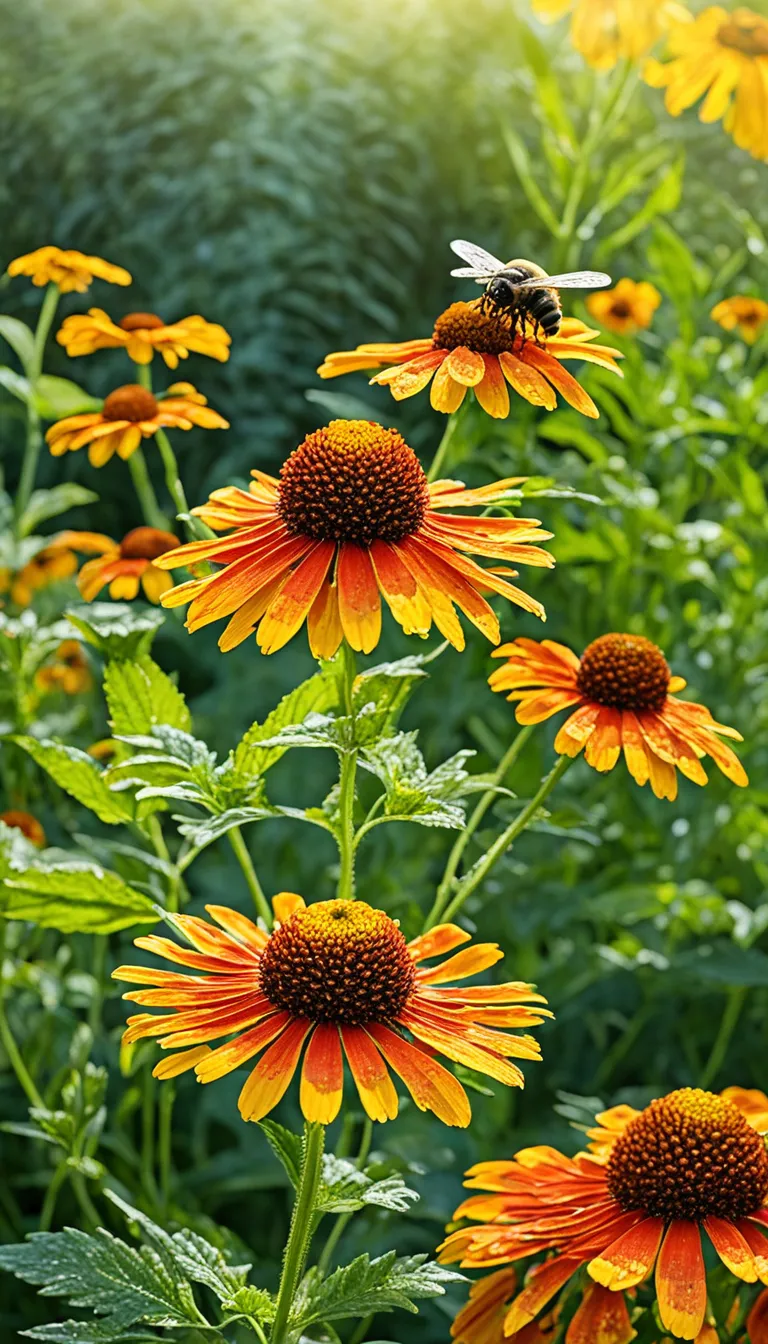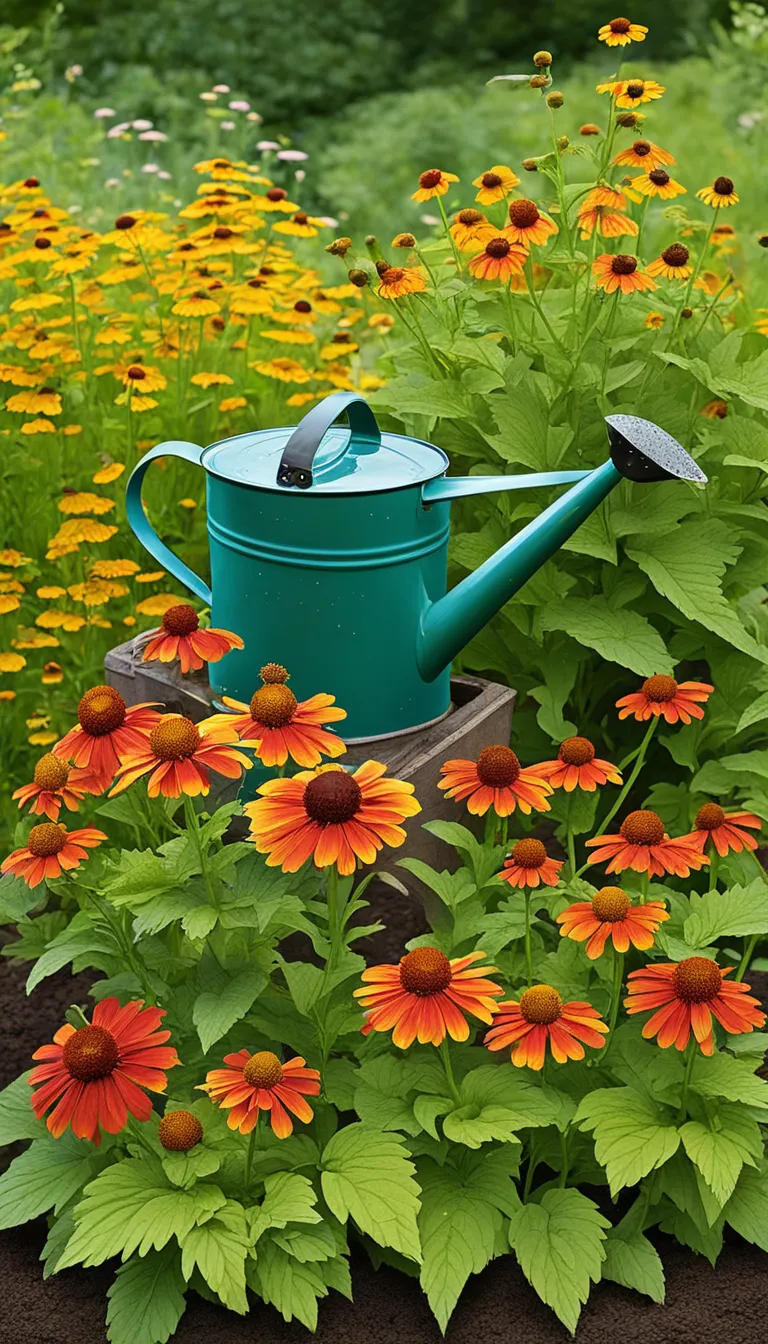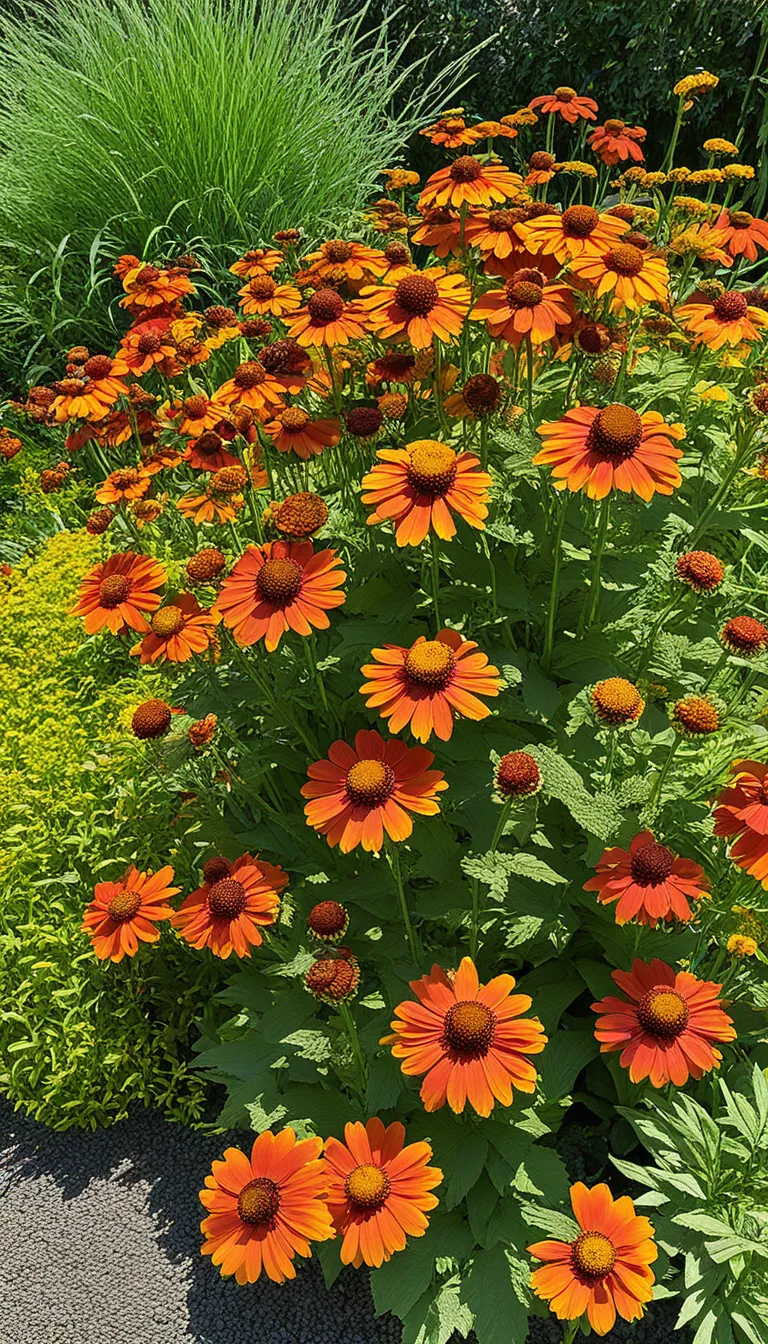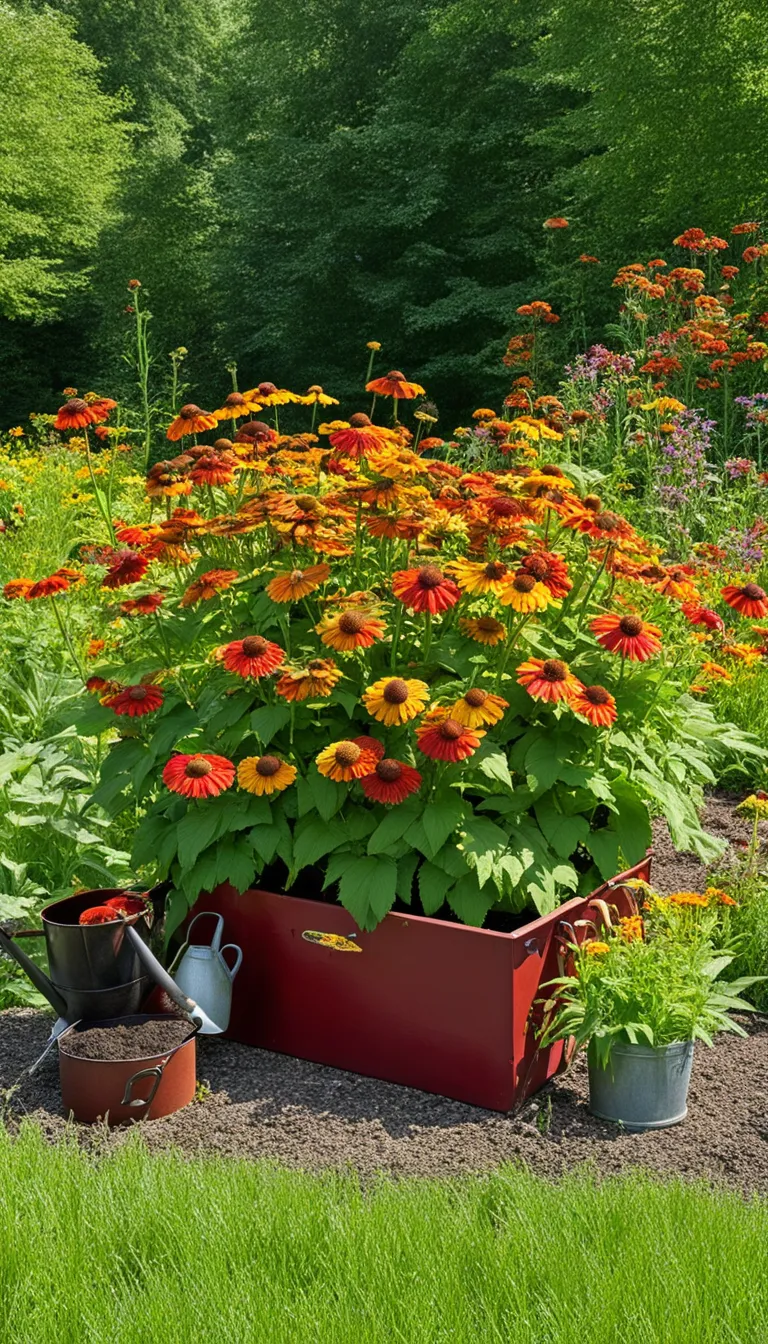Discover the world of Helenium, a colorful perennial that brings life to any garden with its vibrant flowers and easy maintenance. Have you been looking for that perfect bloom to add a splash of color to your late summer garden? Look no further! Helenium, also known as sneezeweed, is the surprise explosion of hues your garden craves.
Why choose Helenium, you ask? Well, let me tell you, it’s not just about their fiery reds, warm yellows, and rich oranges. It’s about how these hardy plants can stand tall amidst the sweltering summer heat, inviting butterflies and bees to a dance of pollination. It’s a sight to behold, a spectacle of nature’s synergy at work!
But wait, there’s more! Caring for Helenium is a breeze. They’re not just pretty faces; they’re tough cookies too. With just a bit of love and attention, you can ensure that these beauties will return year after year, with minimal fuss. They’re the friends in your garden that don’t demand much but give back in abundant splendor.
Imagine your garden, as the summer sun begins to wane, bursting into a crescendo of Helenium blooms. It’s like Mother Nature’s own fireworks show, right there in your backyard. So, are you ready to make your garden the talk of the town? Let’s dive into the world of Helenium and turn that imagination into a reality!

What is Helenium?
Helenium, affectionately known as sneezeweed, is not something to sneeze at! This perennial powerhouse is a staple in many gardens due to its daisy-like flowers that boast an explosion of colors from summer to fall. But don’t let the name fool you; Helenium doesn’t cause allergies. In fact, it got its moniker from the historical use of its dried leaves in snuff, which was believed to induce sneezing and clear the head!
Native to America and parts of Central America, Helenium is a member of the Asteraceae family, which it shares with sunflowers and daisies. Its vibrant blooms come in shades of yellow, orange, red, and brown, often with a central cone that’s either brown or yellow. These colorful crowns dance atop stems that range from 2 to 5 feet tall, depending on the variety.
But Helenium isn’t just a pretty face; it’s a plant with purpose. It’s known for attracting pollinators like bees and butterflies, making it an essential contributor to the health of your garden. Plus, it’s a late bloomer, offering a burst of color when many other plants are starting to fade. Here’s a quick list of reasons why Helenium stands out:
- Long Blooming Season: From mid-summer to autumn, Helenium keeps your garden vibrant.
- Pollinator-Friendly: Bees and butterflies can’t resist its allure.
- Drought-Resistant: Once established, it can handle the heat and lack of water.
- Versatility: Perfect for borders, cutting gardens, and naturalized areas.
With all these attributes, Helenium is not just a plant; it’s a dynamic addition to any garden seeking a touch of surprise and a visual explosion of color. So, are you ready to let Helenium ignite your garden’s potential?

How to Care for Helenium?
Caring for Helenium, or sneezeweed, is a breeze, making it a perfect choice for gardeners of all levels. These perennials thrive with just a bit of attention and can explode with color, surprising visitors with their late-summer fireworks display. But how do you ensure your Heleniums are the talk of the neighborhood? Let’s dig in!
First and foremost, Helenium loves the sun. Plant them in a spot where they can bask in full sunlight to encourage those vibrant blooms. They’re not too picky about soil, but they do prefer it to be well-draining. If your garden tends to hold water, consider raising the beds or amending the soil with organic matter to improve drainage.
When it comes to watering, consistency is key. Heleniums like to stay moist, but not waterlogged. A good rule of thumb is to water them deeply once a week, adjusting as necessary for rainfall and temperature. Mulching around the plants can help retain moisture and keep those roots happy.
Don’t forget about nutrition! A balanced, slow-release fertilizer applied in the early spring can give your Heleniums a boost. But too much of a good thing can be a problem, so avoid over-fertilizing which can lead to lush foliage at the expense of those sought-after blooms.
Lastly, keep an eye out for pests and diseases. Heleniums are pretty hardy, but they can occasionally fall victim to fungal diseases like powdery mildew or pests such as aphids. Regular inspections and prompt treatment with eco-friendly options can keep your plants in tip-top shape.
- Full sunlight is essential for optimal growth.
- Ensure well-draining soil; amend if necessary.
- Water deeply and regularly, avoiding over-saturation.
- Apply a balanced fertilizer in early spring.
- Monitor for pests and diseases and treat accordingly.
With these simple care tips, your Heleniums will be set to surprise and explode with color, bringing a dynamic and vibrant flair to your garden that’s sure to captivate and charm all season long.

What are the Helenium Varieties?
Helenium, also known as sneezeweed, isn’t just a one-trick pony; it comes in a plethora of varieties that can ignite your garden with an explosion of colors and forms. Have you ever wondered how many ways you can spark up your garden beds with these beauties? Let’s dive into the world of Helenium varieties!
First off, let’s talk about ‘Moerheim Beauty’. This variety is a true showstopper with its deep red to burnt orange petals that circle a prominent brown center. It’s like watching a sunset right in your garden! Then there’s ‘Sahin’s Early Flowerer’, which, true to its name, starts the Helenium party early in the season with yellow and orange bicolored flowers.
But wait, there’s more! If you’re looking for something a bit more unique, the ‘Ruby Tuesday’ variety brings a rich, velvety red to the mix, while ‘Helena Red Shades’ offers a spectrum of reds that can range from deep crimson to a lighter cherry. And let’s not forget ‘Kanaria’, which stands out with its bright, canary-yellow blooms.
Here’s a quick list of some popular Helenium varieties to consider:
- Moerheim Beauty – Deep red to burnt orange flowers
- Sahin’s Early Flowerer – Early bloomer with yellow and orange flowers
- Ruby Tuesday – Velvety red petals
- Helena Red Shades – A spectrum of reds from crimson to cherry
- Kanaria – Bright yellow blooms
Each variety of Helenium brings its own special flair to the garden, and with such a wide range to choose from, you can create a tapestry of color that will make your garden explode with life. So, why not mix and match a few to create your own personalized display of these vibrant perennials?





